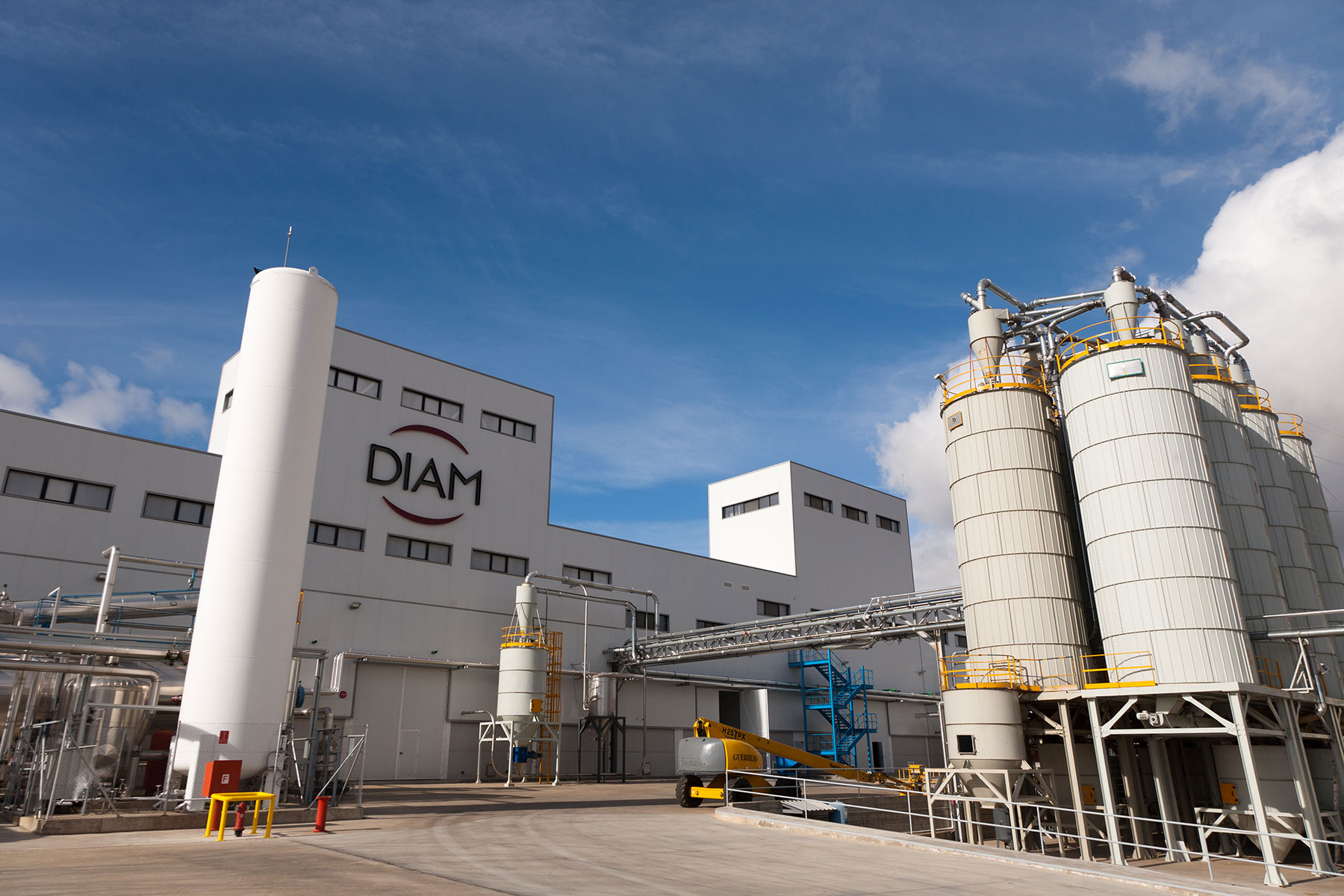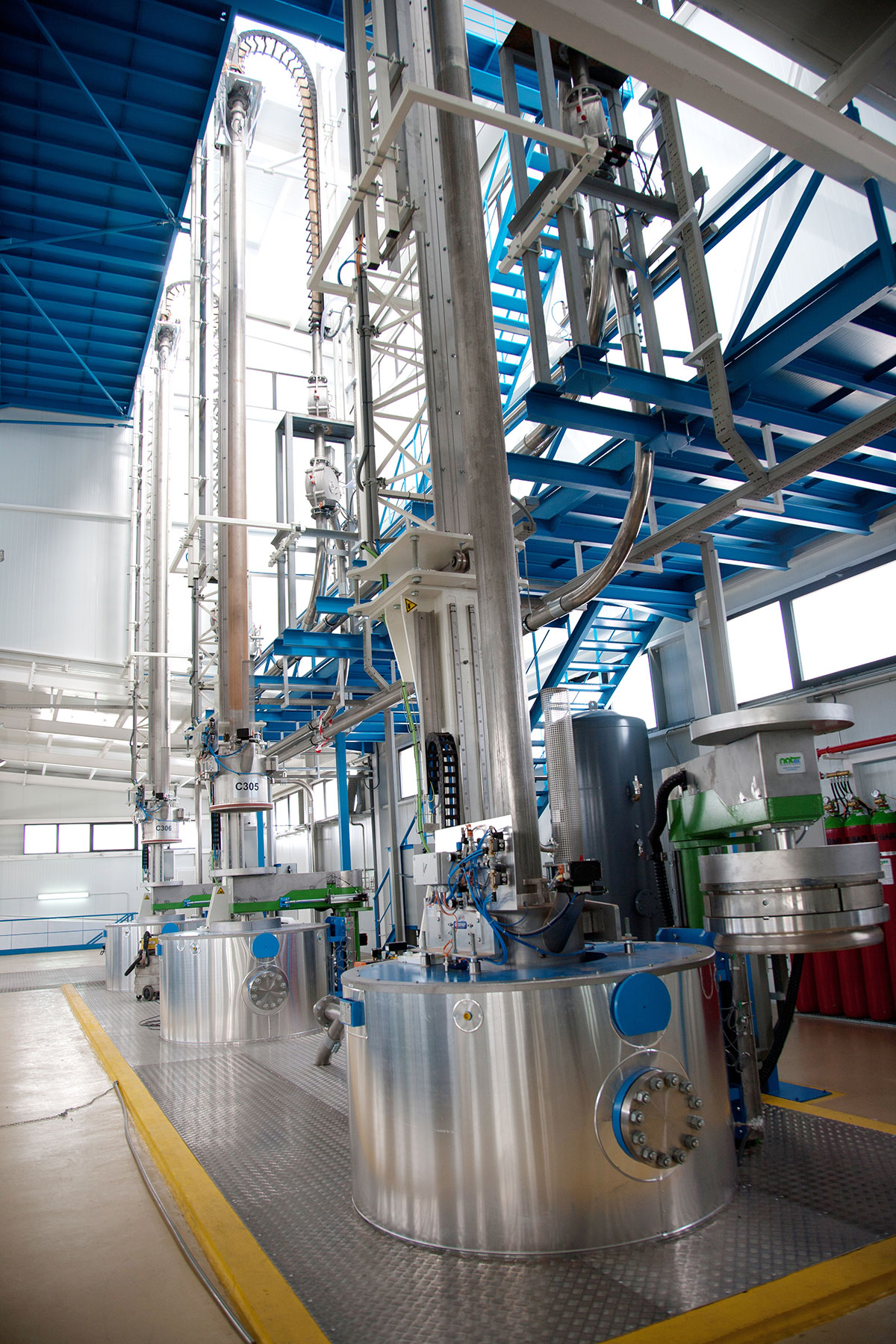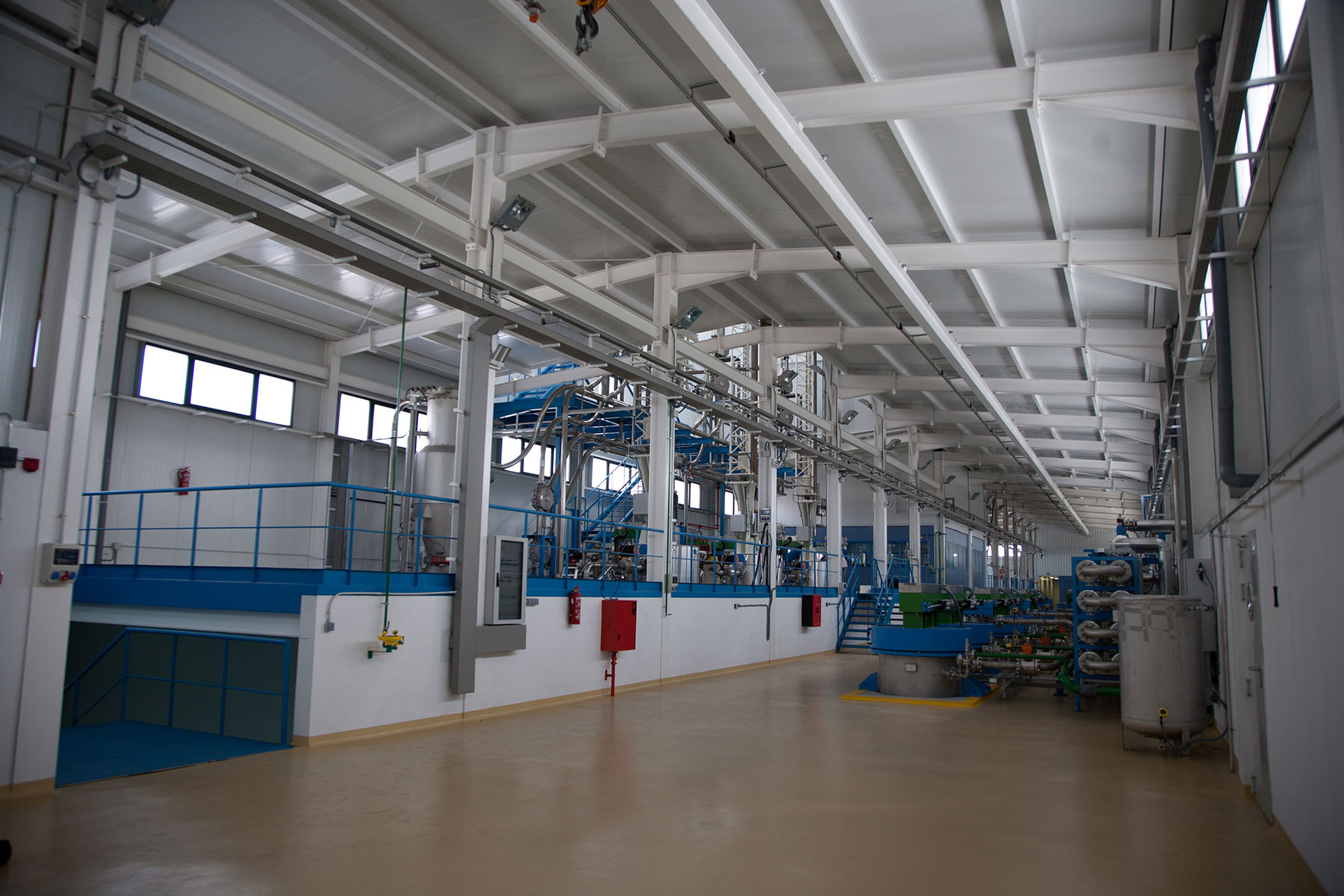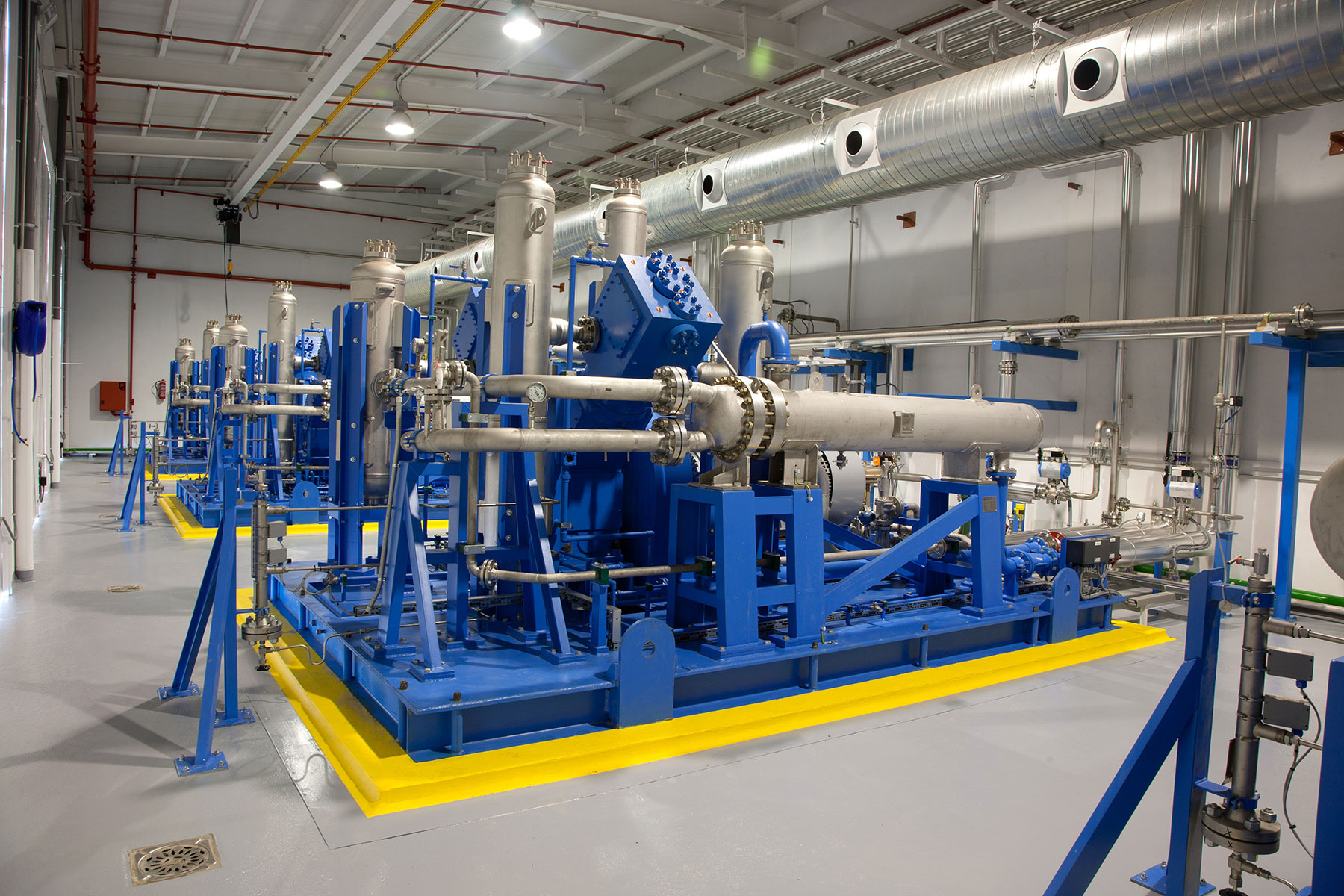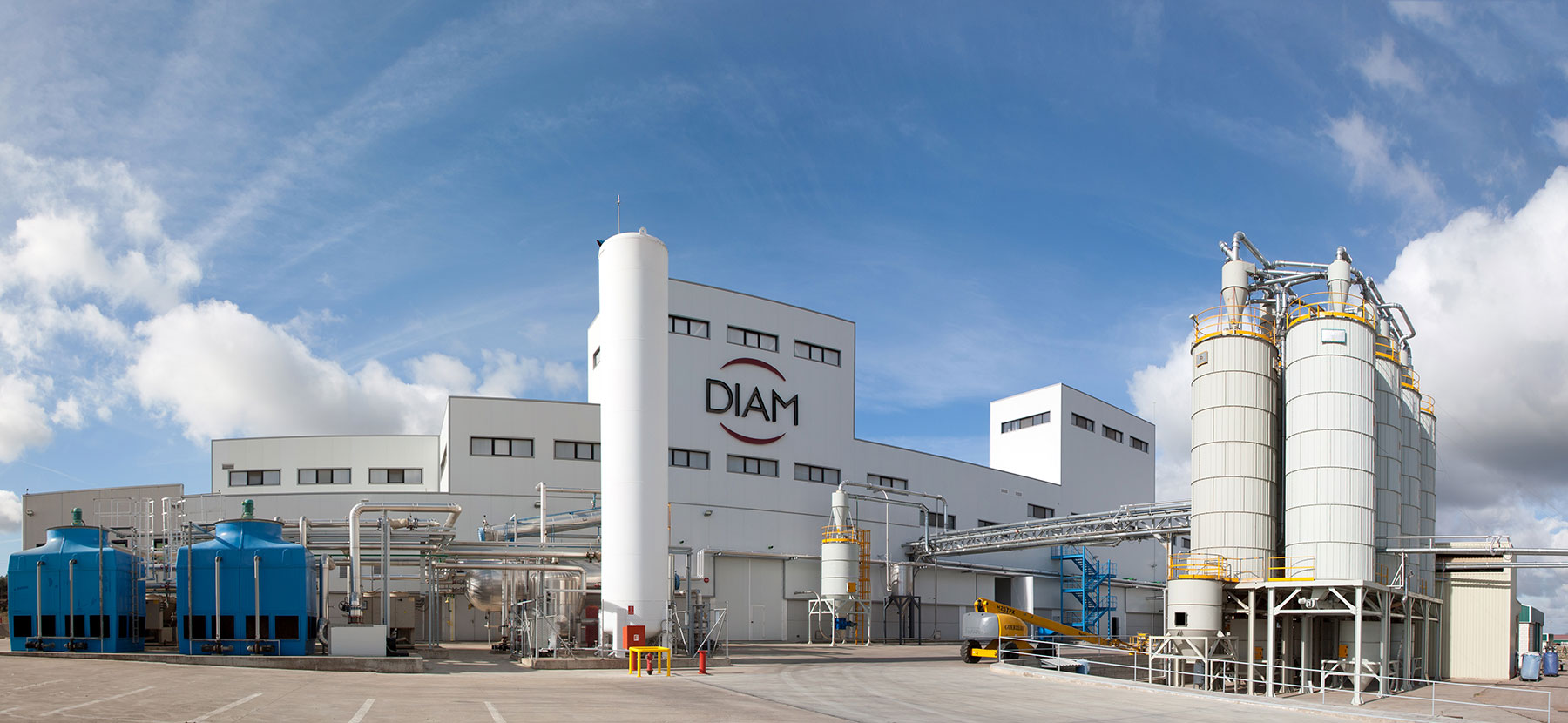Cork cleaning plant Diam 1 + 2
Cork is a natural polymeric foam (based on the substance suberin) and has been used for centuries for closing of bottles. Secondary metabolic products of fungal and bacterial infections in cork are responsible for the typical cork taste in wine. The most unpleasant substance that is responsible for the loss of quality of the wine is 2,4,6 trichloroanisole (TCA). Wine specialists can detect already 2 ng / l of this substance in the wine.
Diam Corchos is a subsidiary of Diam Bouchage and its supercritical CO2 extraction process removes this unwanted TCA from cork below the measurable limit, currently at 0.2 ng/l. Cork granulate is placed in one of the 8,5 m³ or 12 m³ extractors and CO2 is heated and compressed to a supercritical state, where it acts as a solvent. This supercritical CO2 is introduced into the extractor, where it is diffusing through the cork and extracting TCA and other unwanted compounds. The CO2, now carrying these compounds, is decompressed and returned to a gaseous state, separating the extracted substances. Afterwards, the CO2 is filtered and recycled for reuse, ensuring the corks are free from taint and maintain sensory neutrality.
In this project was the first industrial CO2 extraction plant fully dedicated to cork and was continuously optimized since 2005. It is now powered fully electrically, with a state of the art energy recovering system in the form of a heat pump and a CO2 recovering systems from 2024. These features have been installed to ensure an absolute minimum of operational expenditures and environmental impact.
Name of client: Diam Corchos
Equipment size: 3x8,5m³ 3x12m³
Country of installation: Spain
Product processed: Cork granulate

